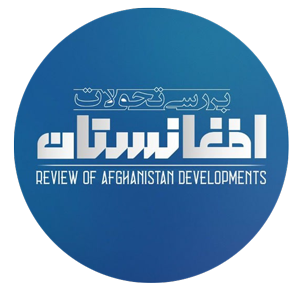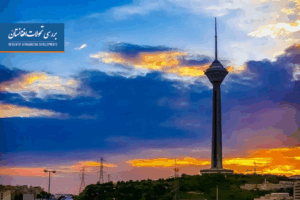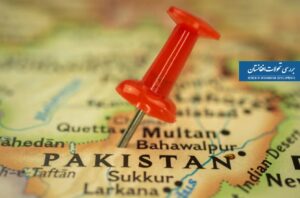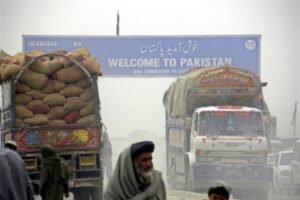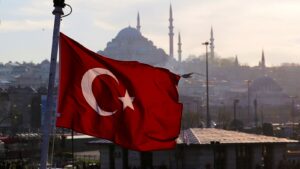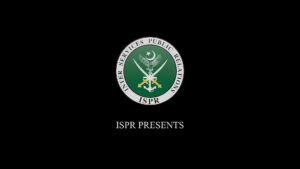Introduction
Migration literature encompasses a body of works where authors recount their personal migration experiences beyond their native lands; these experiences are characterized by profound emotions, various challenges, yearning, and an ongoing quest for identity. Specifically, regarding Afghanistan, the onset of the significant migration waves and the emergence of this literary genre can be traced back to the years following the rise of the communist regime and the subsequent military occupation by the Soviet forces.
Afghan refugees residing in host nations not only refrained from leading a passive existence but also actively participated in cultural and literary pursuits alongside their everyday activities, resulting in a diverse array of artistic and written creations. Afghan Immigration literature, in its unique context, represents a convergence and intersection of various elements. This body of literature emerges not merely from geographical displacement but also from an internal and cultural shift that compels the refugee writer to reassess the parameters of their existence. In Afghanistan, where conflict, instability, and forced migration have significantly influenced the lives of many, this literature acts as a vital and living voice to articulate both suffering and aspirations while preserving cultural identity. Furthermore, it has the potential to serve as a conduit for fostering understanding and empathy among diverse societies, thereby reinforcing cultural and social resilience.
The Formation of Afghan Immigration Literature
Afghan migration literature, contrary to common perception that it is a recent development, actually has its origins in many years of conflict, instability, and compelled migration. However, what established this literature as a distinct and recognizable movement was the extensive political, economic, and cultural migrations that began in the 1970s.
Initially, Afghan Immigration literature produced by Afghan refugees manifested as memoirs, nostalgic poetry, and fragmented notes. However, over time, as Afghan immigrants established themselves in various countries, particularly in Iran, Pakistan, Europe, and North America, this body of literature evolved into a more structured form. In contrast, the circumstances faced by immigrant writers in Iran differed from those in other nations. This was due to Afghan immigrants encountering a society that communicated in the same language and largely shared cultural traits, resulting in their immigration experience being marked by a somewhat ambiguous boundary. On one hand, this linguistic and cultural connection facilitated their ability to articulate their emotions and experiences; on the other hand, the significant similarities rendered the immigration experience less foreign, preventing their literature from developing a distinct identity.
Afghan Immigration Literature Topics
Afghan migration literature frequently exists at the crossroads of “resistance,” “opposition to war,” and “migrant challenges.” Besides narrating experiences of suffering, displacement, and identity conflicts, these texts also tackle essential inquiries regarding homeland, language, belonging, cultural diversity, discrimination, and the potential for return. From this perspective, literature serves not merely as a reflection of personal experiences but also as a representation of power dynamics, oppression, disruption, and the endeavor to reconstruct one’s identity.
Resistance
Resistance literature in Afghanistan is deeply embedded in the historical context of the people’s fight against foreign occupation, internal oppression, and external aggression. Its defining features encompass the portrayal of the anguish of exile and the endeavor to sustain the native culture. Spanning from the British colonial period to the Soviet invasion, this theme has consistently served as a medium for articulating the pain, aspirations, and resilience of the populace. During Afghanistan’s conflict with the Soviet forces, poetry and narratives emerged as instruments of resistance. This form of literature transcended mere political utility; it represented a vital effort to safeguard identity, language, and culture amid turmoil. The authors associated with this movement sought to preserve the collective memory of the people and forge a connection between the younger generation and their illustrious heritage.
Opposition to war
Following the withdrawal of Soviet forces, Afghan Immigration literature transitioned from being a simple expression of resistance to a form of anti-war literature. The painful realities of ethnic conflicts, civil strife, and the sacrifices of civilians compelled writers and poets to focus not on themes of heroism and triumph, but rather on the experiences of suffering and injury. Anti-war literature adopts a more critical stance. In this genre, authors have denounced violence, revealed war crimes, and shown compassion for the victims of war. These literary works serve as a testament to an era marked by defeat, confusion, and a profound lack of social trust in the aftermath of war.
Challenges for immigrants
Migration literature emerges from the historical experiences of decades marked by forced migration, conflict, exile, discrimination, and the quest for identity within an unfamiliar landscape. Afghan migrant authors have crafted a narrative depicting a suspended, displaced individual in pursuit of meaning; a narrative that intertwines the personal with the political, the individual with the collective. This genre serves as a convergence point for the diverse layers of cultures, identities, and internal struggles faced by migrants. In this framework, the central figure is the exiled individual, who navigates the complexities of past and present, roots and future, acceptance and rejection, with the prevailing theme being the trauma of migration and the quest for identity and belonging.
Elements of Afghan immigration literature
Identity crisis
A prominent aspect of Afghan migration literature is the characters’ confrontation with an identity crisis. The Afghan migrant occupies a dual role; on one side, he seeks to maintain his native language, culture, and values, while on the other, he endeavors to gain acceptance within the host society. This struggle engages him in a cultural exchange process, compelling him to navigate the delicate balance between retaining and relinquishing aspects of his identity.
- Afghan immigration literature serves as a striking representation of this internal struggle. Characters frequently fluctuate between the notions of “self” and “other,” “past” and “present,” as well as “homeland” and “foreignness.” In these narratives, identity emerges as a complex and evolving concept; a dynamic idea that immigrants must continually navigate and adjust to in their new surroundings to preserve.
Even in optimal circumstances of social acceptance, immigrants often perceive themselves as “second-class citizens”. This perception arises because, in their subconscious, the host country can never entirely supplant their homeland, leading to a sense of belonging that remains in a precarious and suspended state.
Marginalization and being on the periphery
Another significant aspect of Afghan immigration literature is the experience of existing on the periphery; both geographically, on the fringes of the host nation’s principal cities, and in terms of culture and society. The Afghan migrant, during the transition from their culture of origin to that of the host, finds themselves neither completely anchored in the past nor entirely embraced in the present. This “intermediate state” or liminality is accompanied by a sense of rootlessness, restlessness, and alienation.
In numerous instances, Afghan migrants find themselves caught between two conflicting value systems and cultures. This situation leads to an unstable and fragmented way of life; one that exists on the periphery, driven not by a sense of belonging but by the necessity of survival. Such experiences are vividly portrayed in Afghan immigration literature, where characters frequently grapple with the challenge of carving out a space for themselves in a society that fails to acknowledge them, while simultaneously being unable to return to their original homeland.
Nostalgia
Nostalgia, defined as a yearning for the past and a lost homeland, emerges as one of the most prevalent and striking themes in Afghan migration literature. In these narratives, nostalgia transcends mere longing for bygone days; it represents a profound void in the psychological experience and identity of the migrant. Within Afghan migration literature, memory serves as a mechanism to preserve ties to one’s roots, while simultaneously placing the migrant in a state of limbo between past and present. The concepts of time and space in these stories are fluid and elusive; it appears as though the characters are navigating an imperceptible boundary between ‘what was’ and ‘what is.’
Afghan refugees frequently fluctuate between a mental representation of their homeland—which continues to thrive in their memories and has become increasingly idealized—and the precarious reality of exile. This fluctuation serves as a primary source of sorrow, anxiety, and at times, significance in Afghan immigration literature.

Language: the carrier of identity and memory
In Afghan immigration literature, language serves not only as a tool for communication but also as an integral component of the migrant’s identity, culture, and shared memory. For Afghan migrants, maintaining their native language represents a means of self-preservation. Nevertheless, migration introduces complexities to the migrant’s connection with language; it can act as a conduit for fostering closeness with the host society or as an obstacle to comprehension and acceptance.
Afghan immigrants residing outside the Persian-speaking regions, particularly in Western nations, are at a greater risk of forgetting or relinquishing their native language. In contrast, Afghan immigrants in Iran encounter fewer difficulties in preserving their language because of their linguistic closeness; however, this closeness can occasionally lead to the marginalization or alteration of their native languages (such as Dari, Pashto, or other regional languages) during the assimilation process with standard Persian.
Related articles
Social Trust Crisis in Afghanistan
Identity Formation in Afghan Refugees in Iran
Conclusion
Afghan immigration literature serves as a mirror to the lived experiences of individuals facing poverty, marginalization, homelessness, and the quest for identity. In contrast to the official and institutional narratives prevalent in Afghanistan, this body of work is rooted in personal stories, self-expression, and cultural resistance. It has successfully evolved from a state of insecurity and rejection into a platform for self-reinvention and intercultural dialogue. While it is premature to assert the existence of a coherent and institutionalized movement within this domain, the proliferation of literary works by Afghan migrants across various formats and geographies highlights the dynamism and vibrancy of this voice.
Afghan immigration literature serves not only to express suffering and divisions but also to foster a cultural and spiritual future for Afghan migrants. Research into Afghan immigration literature transcends mere literary analysis; it represents a confrontation with the social, historical, and anthropological challenges of today’s world. This is because Afghan immigration literature ultimately embodies the voice of a landless human rich in narratives—a person who, despite the constraints of borders, languages, and identities, continues to write, harbors hope, and seeks recognition.
